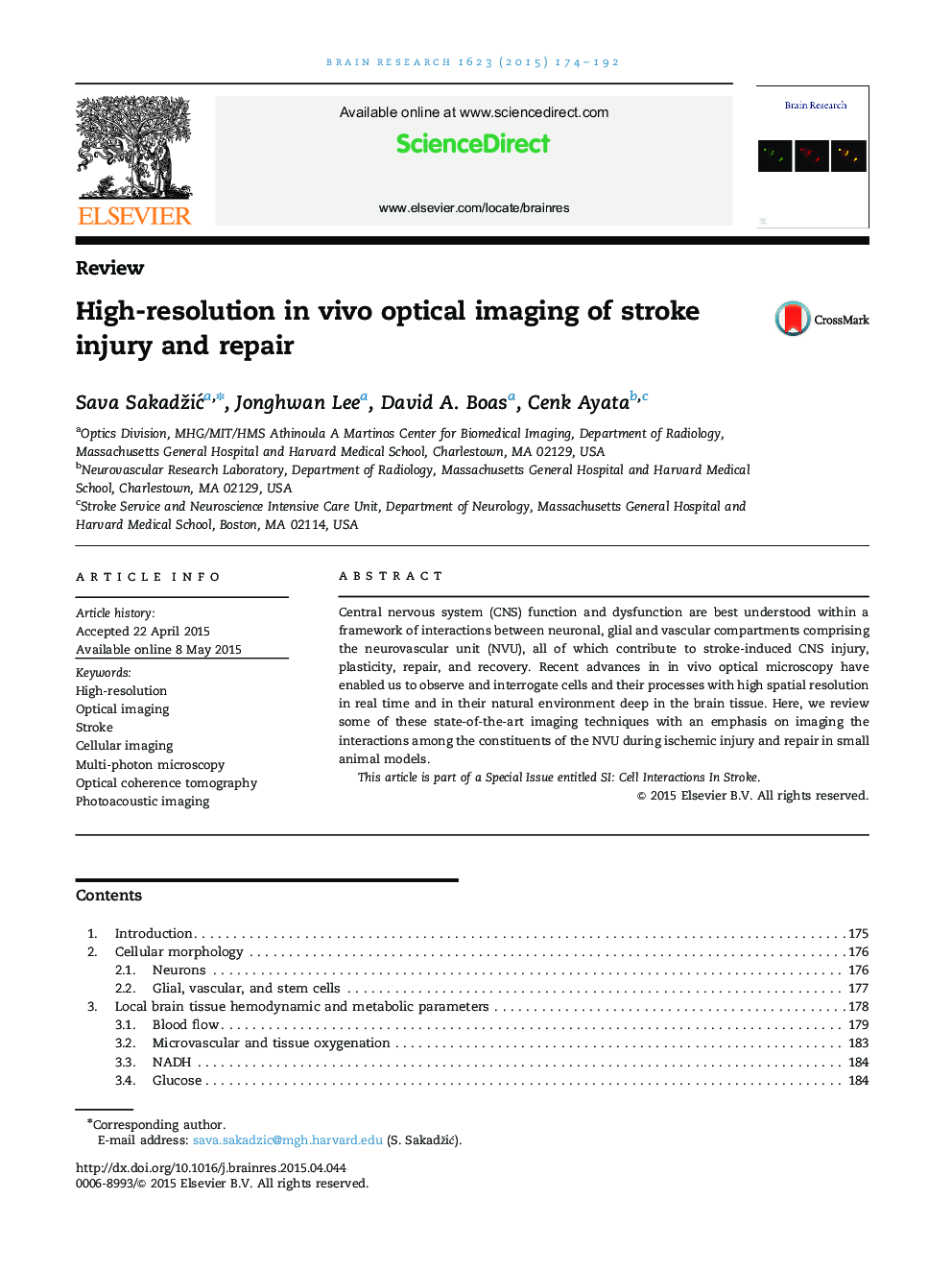| Article ID | Journal | Published Year | Pages | File Type |
|---|---|---|---|---|
| 4323744 | Brain Research | 2015 | 19 Pages |
•Reviewing high-resolution optical technologies for in vivo brain imaging.•Numerous choices exist for imaging cellular structure.•Only few functional markers are in use.•Probe design and imaging technology are rapidly improving.
Central nervous system (CNS) function and dysfunction are best understood within a framework of interactions between neuronal, glial and vascular compartments comprising the neurovascular unit (NVU), all of which contribute to stroke-induced CNS injury, plasticity, repair, and recovery. Recent advances in in vivo optical microscopy have enabled us to observe and interrogate cells and their processes with high spatial resolution in real time and in their natural environment deep in the brain tissue. Here, we review some of these state-of-the-art imaging techniques with an emphasis on imaging the interactions among the constituents of the NVU during ischemic injury and repair in small animal models.This article is part of a Special Issue entitled SI: Cell Interactions In Stroke.
